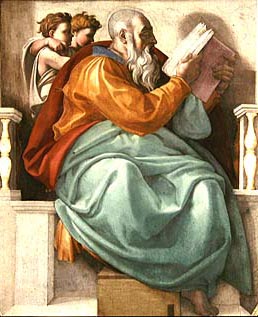 Introduction and Outline
Introduction and Outline
Zechariah’s name means, “whom YHWH hath remembered”, he began his ministry about the time that Haggai’s was beginning to abate. This would put the start of his ministry about 520 B.C.
The text states that he was the son of Berechiah, son of Iddo, the prophet. His grandfather Iddo is listed with those returning from exile [Neh. 12:1-7]. This would indicate the Zechariah himself was most likely born in the land and did not himself return form Babylon.
Both a poignant warning to Israel to mend their spiritual ways; as well as a haunting reminder of the emptiness of a nation living without the Lord; and a promise of metaphorical and literal riches yet to come. The appearance of the book of Zechariah has many characteristics similar to the books of Daniel and The Revelation, and much of the same imagery is used. One noticeable similarity is that both Zechariah and The Revelation are in two distinct parts. In Zechariah there is a series of visions given while the temple is being built, where The Revelation opens with one vision of the seven churches, styled as spiritual temples [1Cor. 6:19]. The second half of Zechariah is about the Messiah rejection and final triumph, where The Revelation’s second half is about the rejection and final triumph of the believers.
Where Daniel and The Revelation read like one continuos book, Zechariah is like a twin sister. Daniel and The Revelation are chiefly concerned with the politics of the Imperial nations, with small portions about the spiritual conditions of the people. Zechariah is about the spiritual conditions of the people, with small sections about the political conditions. Further, there are more references to angels in these three books, than the rest of the Bible combined.
I Introduction vs 1:1-6
II Chapters 1-8, Messages given during the building of the second temple. This consists of a series of visions.
- A. Call for National Repentance vs 1:1-6
- B. The horsemen in the vs 1:7-17
- C. The four horns and smiths vs 1:18-21
- D. The measuring line of Jerusalem vs 2:1-13
- E. Joshua a symbol of the priestly nation vs 3:1-10
- F. The golden lampstand and two olives trees vs 4:1-14
- G. The flying scroll vs 5:1-4
- H. The woman in the ephah vs 5:5-11
- I. The four Chariots vs 6:1-8
- J. Joshua crowned as a type of the Branch vs 6:9-15
- K. The hypocrisy of their fast vs 7:1-7
- L. The exile explained vs 7:8-14
- M. Restoration of Jerusalem vs 8:1-17
- N. The nations shall seek the LORD in Jerusalem vs 8:18-23
III Chapters 9-14, Messages after the second temple was built. There are two sermons, and both are Oracles.
